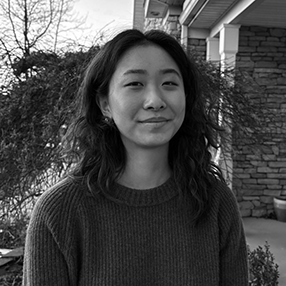Spring
Seoul, May 1980
cherry blossoms are opening.
Pink clouds canopy the road to town,
wind shakes out sakura rain like piggy-bank coins.
A new school year erupts.
I walk the long road to university.
Cherry petals confetti my neck,
my shoulders, like feathers.
Gathering into silken wings.
The Japanese planted cherry trees
when they came, tossing seeds that cavity
her womb like spent bullets.
More sinister now than tank tracks
And wreckages. Even sudden beauty and rebirth
a Japanese image.
The Korean girls stolen and
numerous as planted seeds.
Japan calls these trees Tokyo Cherry,
says their petals represent Japanese soldiers’
brief but beautiful lives.
I learned so a previous spring and wondered
What other miracles and newness
were so planted? How did Korean
spring occur before Japan
came with flourishing destruction.
What is a first day or university
without washes of pink and white
without green men glittering
black guns and boots mapping the path?
Tall whispering grasses also planted
to cultivate order and grow goodness and cleanness
forever. As I enter my city I see
one in ironed uniform
stalk-still inside a gust of blossoms.
The string inside me catches
as blushing petals ceremoniously collect
on his blood-green kevlar.
Copyright © 2025 by Rachel Kyung-Joo Shin. Originally published in Poem-a-Day on February 24, 2025, by the Academy of American Poets.
“Imperialism and militarism have long been shaping influences of mundane Korean life, and the cherry trees lining many roads in South Korea are the Yoshino, or the ‘Tokyo Cherry,’ planted as a form of cultural control during Japan’s colonial rule. Cherry blossoms traditionally represented Japanese soldiers, their fall symbolizing death in battle. The poem explores the politics of aesthetic violence, set as the imperial cherries have reached maturity and another military conflict sweeps Korea: the Kwangju Uprising and student demonstrations of 1980. ‘Spring’ offers natural renewal as an image of both splendor and carnage.”
—Rachel Kyung-Joo Shin

